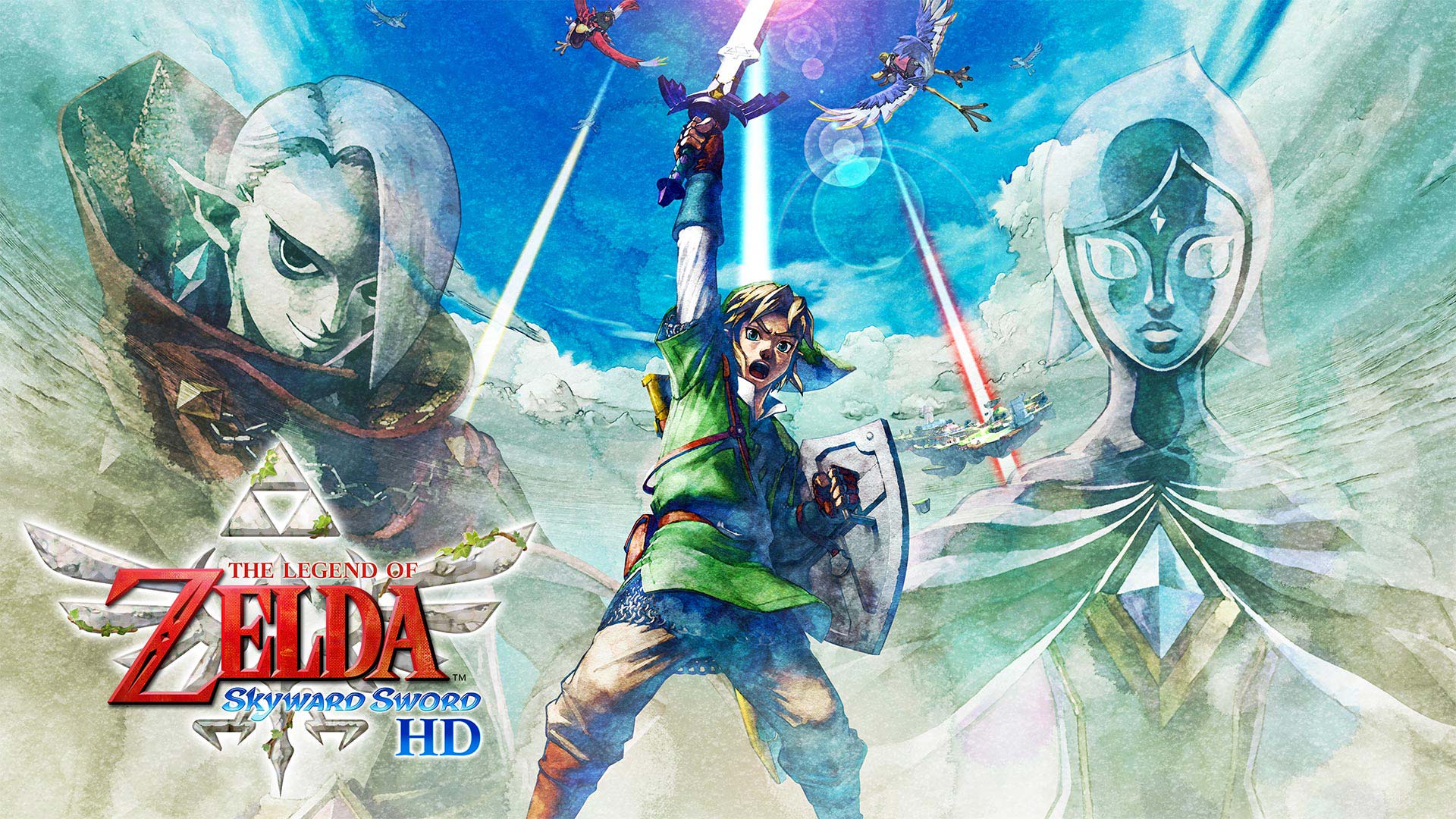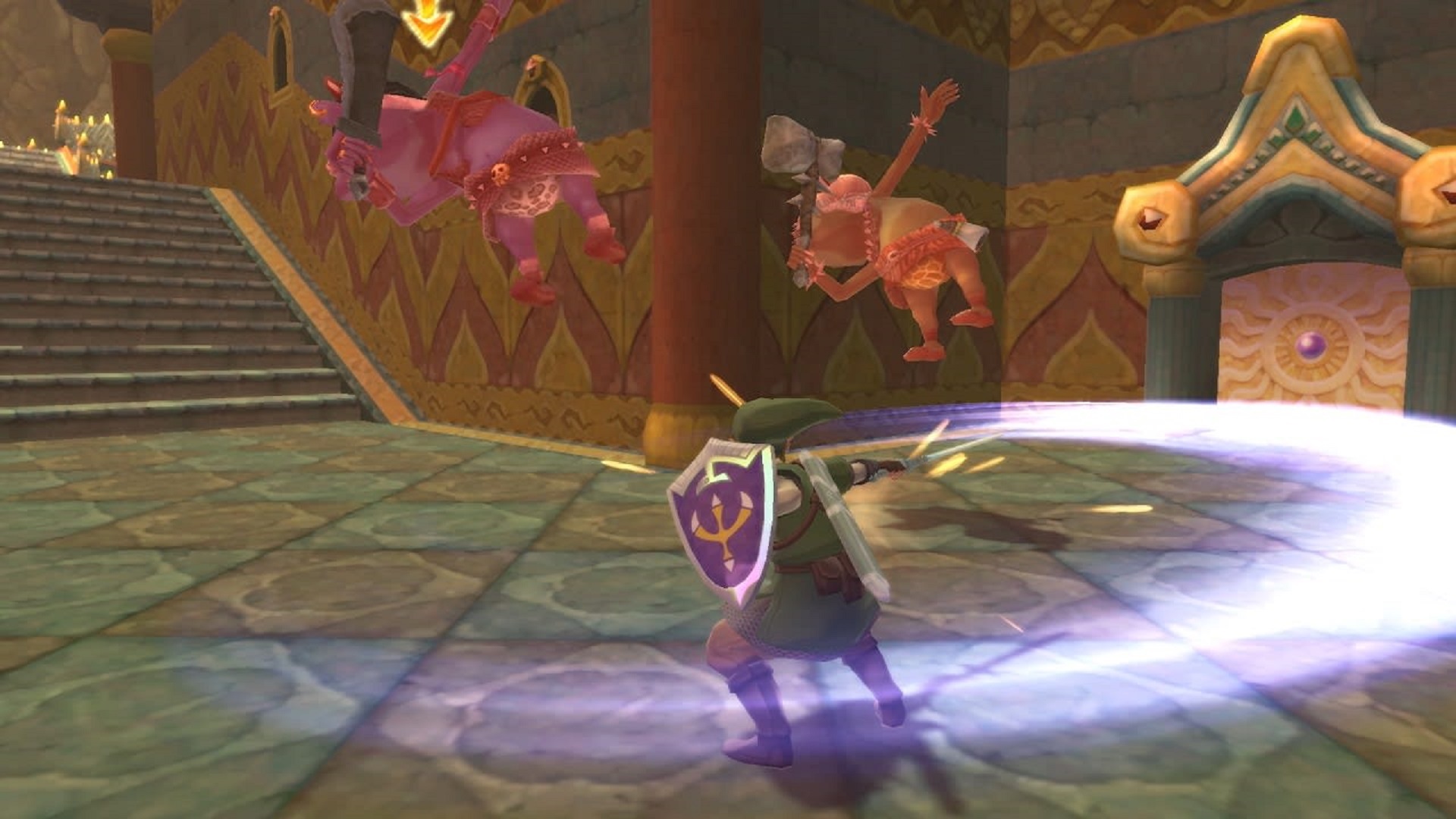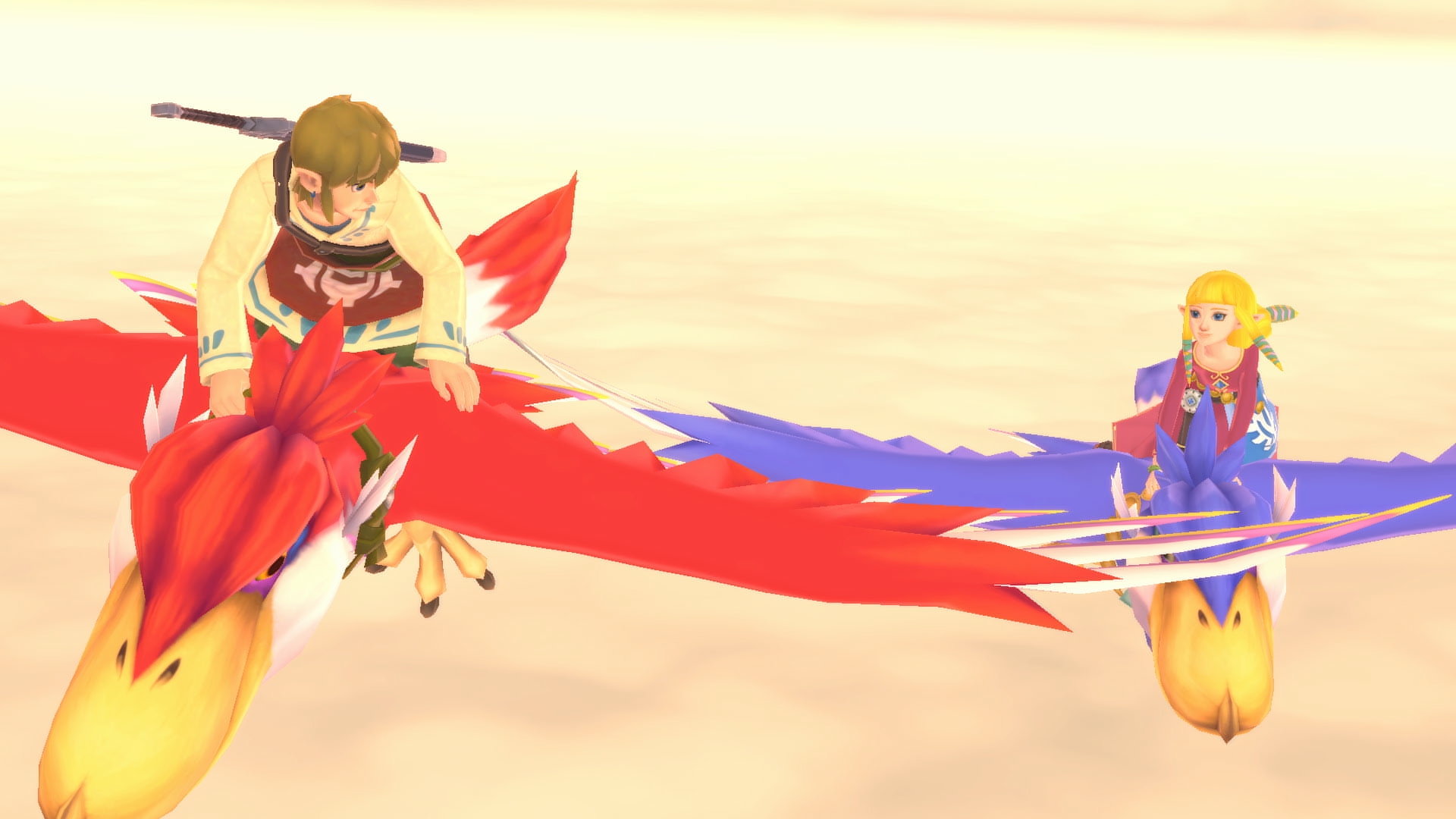The Legend of Zelda: Skyward Sword has a complicated legacy. Upon launch, it received widespread praise from critics, as most Zelda games do, and there’s a legion of fans out there that absolutely adores the game. But it didn’t take long for a large number of people to take note of the game’s many flaws, and eventually, the consensus was that Skyward Sword was the lowest point of the franchise in a long, long time. Forced motion controls, an abundance of padding and filler content, excessive tutorials, extremely linear design- for all of these reasons and more, the backlash against the game was ferocious. So loud was the criticism for those last two points in particular that Nintendo decided to respond by making Breath of the Wild, a game with almost zero tutorials and the most open world open world of all time.
To celebrate Zelda’s 35th anniversary though, Nintendo has brought Skyward Sword back into the limelight by remastering it and putting it on the Switch. More than a few times, games have been given a new lease of life on the Switch, enabling them to capture larger audiences and, as such, more love and adoration than they could when they first launched. The problem here, however, is that even though Skyward Sword HD improves upon the original game in several ways, not only do some of its additions just not work out, there are also flaws baked into the core of the experience that no remaster could have ever rooted out.
“Even though Skyward Sword HD improves upon the original game in several ways, not only do some of its additions just not work out, there are also flaws baked into the core of the experience that no remaster could have ever rooted out. “
On a surface level, Skyward Sword HD sharpens up the game’s visuals, and while the remastering work done here doesn’t hold a candle to what we saw in, say, The Wind Waker HD, it still looks pretty good. Sure, it definitely looks like a better looking version of a game that came out a decade ago, but it helps that Skyward Sword had an inherently timeless art style even when it released on the Wii. That aesthetic helps the remaster overcome issues that exist on a more technical level. Far more noticeable are the improvements made to the game’s frame rate, which is now locked to an almost flawless 60 FPS, as opposed to the 30 frames of the original. As you might imagine, that boosted performance does wonders for the game.
On a visual and technical level, Skyward Sword HD is a very conservative remaster- to the extent that it almost shouldn’t even be called that. But when you look deeper, you realize that it makes several other smaller improvements and quality-of-life changes, and though these might each seem negligible in isolation, put together, they really do make a difference. On the Wii, Skyward Sword was characterized by how much friction there was in the experience, how Fi would pop out with long tutorials every few minutes, how characters would insist on talking to you about meaningless things in excruciating detail, how the game just couldn’t help but keep getting in its own way at every turn.
In Skyward Sword HD, a lot of those rough edges have been smoothed away. Excessive handholding and constant tutorializing aren’t major issues anymore, gameplay isn’t constantly interrupted by needless dialogue boxes or prompts every time you pick up an item, and there’s just far less friction in general, which means that actual gameplay isn’t interrupted nearly as often as it used to in the game’s Wii version. That really does make a difference, to say the least.
“Excessive handholding and constant tutorializing aren’t major issues anymore, gameplay isn’t constantly interrupted by needless dialogue boxes or prompts every time you pick up an item, and there’s just far less friction in general, which means that actual gameplay isn’t interrupted nearly as often as it used to in the game’s Wii version. That really does make a difference, to say the least.”
Unfortunately, those niggling issues weren’t the only thing that made the original Skyward Sword such an uneven experience- poor pacing was basically built into the game’s design, thanks to sections that felt like little more than needless padding. Skyward Sword is at its best when you’re in the dungeons, which are some of the best and most ingeniously designed dungeons in a Zelda game. The problem is, you just have to cut through so much crap to actually get to that stuff. Every dungeon, for instance, is preceded by long and arduous quests that are meaningless filler, existing solely to pad out the game’s runtime, and though there are certainly highlights even in these sections, by and large, they feel like pace-killers.
Of course, the defining trait of Skyward Sword was the motion controls, which, too, have seen some improvements in the Switch remaster, and generally feel more accurate and intuitive. Of the two control schemes on offer in Skyward Sword HD, the original scheme is definitely my preferred option. Enemies are designed around making you actually take the movement and aiming of your attacks into account, and that just feels far more intuitive and enjoyable when you’re actually physically swinging your weapon yourself. Of course, things aren’t exactly perfect here either- there’s still some inaccuracy at times, while the fact that you constantly have to keep recalibrating the controls is also a bit of a nuisance. It’s a pretty simple process, to be fair, and takes less than a second – you just have to point at the middle of the screen and press Y – but you have to keep doing it constantly, especially if you want to play the game sitting down. Also, I’m pretty sure I got tennis elbow because of how much I’ve been flailing my arm around like a crazy person these last few days.
If you don’t want to deal with the motion controls, Skyward Sword HD also adds a completely new button-based control scheme- but it’s not something I’d recommend playing the game with. You swing your sword with flicks of the right analog stick, which just feels far too imprecise. The shield, meanwhile, is brought up by pressing the left stick, which isn’t exactly ideal, since you need the left stick to keep moving around during combat. Meanwhile, when playing with the button controls, controlling the camera requires holding down the L button, which just feels… unnatural. I can’t tell you how many times I tried moving the camera with the right stick, only to be momentarily confused to see Link randomly start swinging his sword around for no reason. It really should have been the other way around – hold down the L button for combat, and control the camera normally – and it’s disappointing that it’s not even an option in the game.
“Skyward Sword HD is a better game than the original Wii title, but for all the improvements it makes, it is still a deeply flawed experience- and no amount of quality-of-life changes could ever fix that, because that’s unfortunately just how the game was designed.”
All the flaws in Skyward Sword feel that much more disappointing because this is a game with so many redeeming qualities. The soundtrack is amazing, the story is probably one of the best this series has ever told, the combat with motion controls can be a lot of fun, and the dungeons, as I’ve mentioned, are excellent. Sure enough, Skyward Sword HD is a better game than the original Wii title, but for all the improvements it makes, it is still a deeply flawed experience- and no amount of quality-of-life changes could ever fix that, because that’s unfortunately just how the game was designed. I’d still recommend it to Zelda fans, because when Skyward Sword is good, it’s very good. It’s just that there are large portions of the game when it’s far, far from good.
This game was reviewed on the Nintendo Switch.
Video Game News, Reviews, Walkthroughs And Guides | GamingBolt
Source link
Related Post:
- If you have patience, Spelunker HD Deluxe is a weird treat • Eurogamer.net
- Halo Infinite Flight Test (Beta) Will Offer Weapon Drills As Part Of 343’s Largest Technical Test To Date
- Review: The Legend of Zelda: Skyward Sword HD
- Review: The Legend of Zelda: Skyward Sword HD for Nintendo Switch
- The Legend of Zelda: Skyward Sword HD review – “The sky’s somewhat limited” | Articles
- Skyward Sword HD Video Review
- Skyward Sword HD Review, Our Dream Zelda Games, And More – GI Show
- Review: Skyward Sword HD is the exact opposite of Breath of the Wild
- The Legend of Zelda: Skyward Sword HD Review – A Diamond Buried In The Rough
- The Legend of Zelda: Skyward Sword HD Review – The Final Verdict


